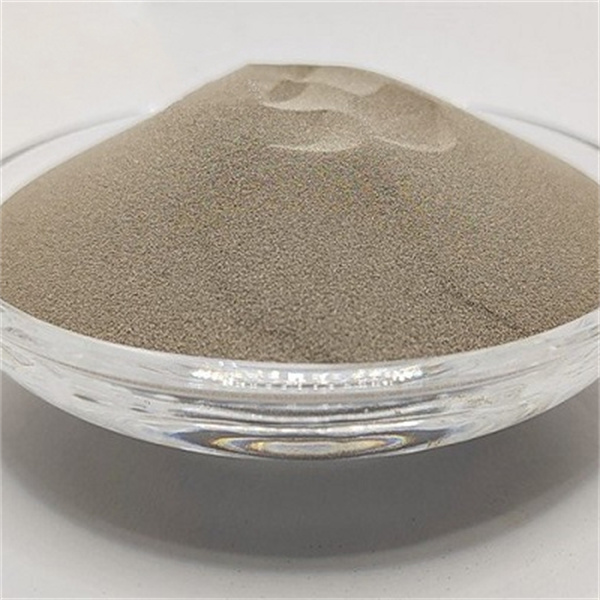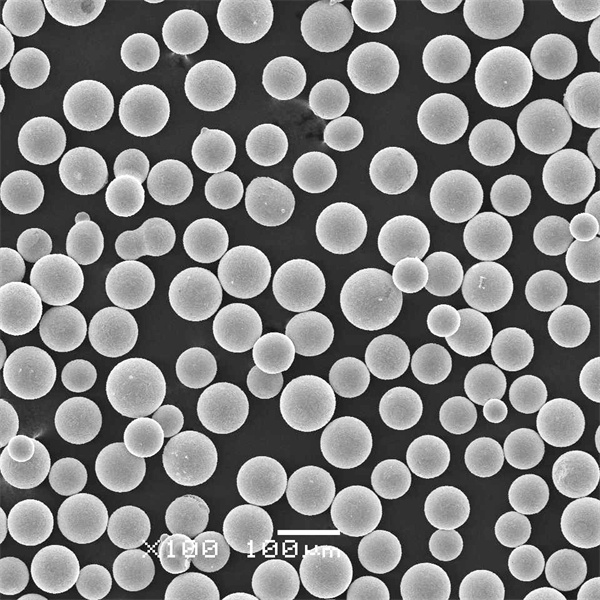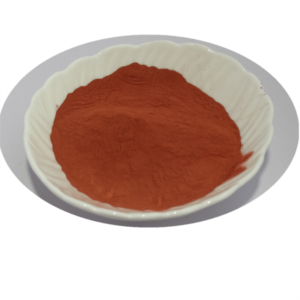개요 텅스텐 금속 분말
텅스텐 금속 분말은 다양한 산업 분야에서 사용되는 텅스텐 원소로 주로 구성된 미세 입자 물질을 말합니다. 주요 특성으로는 매우 높은 밀도, 강도, 경도, 고온 내구성 등이 있습니다.
텅스텐 분말의 일반적인 응용 분야는 다음과 같습니다:
- 텅스텐 카바이드 복합재
- 텅스텐 중합금
- 용사 코팅
- 적층 제조
- 전기 접점
- 방사선 차폐
텅스텐은 독특한 성능과 불안정한 공급 역학이 결합된 중요한 원자재로 간주됩니다. 텅스텐 분말의 사양, 가공, 가격 및 용도에 대해 자세히 알아보려면 계속 읽어보세요.

텅스텐 금속 분말의 재료 유형
텅스텐 금속 분말은 몇 가지 주요 구성으로 제공됩니다:
| 유형 | 일반적인 성적 | 구성 |
|---|---|---|
| 순수 텅스텐 | 99.9%, 99.99% 순도 | 불순물 제한이 있는 원소 텅스텐 |
| 산화물 분산 텅스텐 | Y2O3 추가 사항 | 0.5-1% 이트륨 산화물 나노 입자가 있는 텅스텐 |
| 도핑된 텅스텐 | 란탄 또는 기타 도펀트 | 곡물 성장 억제제가 첨가된 텅스텐 <1% 수준 |
표 1: 응용 분야 요구에 따른 텅스텐 금속 분말의 일반적인 재료 범주
특수 도펀트 또는 산화물 첨가제는 최종 사용자 구성 요소 및 고온에서 안정성이 요구되는 부품에 통합하는 동안 분말 특성을 맞춤화하는 데 도움이 됩니다.
주요 속성
| 속성 | 일반 값 | 중요성 |
|---|---|---|
| 밀도 | 19.3g/cc | 뛰어난 질량 및 방사선 차단 기능 제공 |
| 융점 | 3410°C | 대부분의 금속이 실패하는 극한의 온도에서도 강도를 유지합니다. |
| 궁극의 인장 강도 | 550-620 MPa | 적당한 인장 연성을 가진 비교적 부서지기 쉬운 소재 |
| 경도 | HV 300-350 | 공구강보다 더 단단함 |
| 영의 계수 | 350-410 GPa | 단단하고 휨에 강함 |
| 열 전도성 | 165W/mK | 고온에서 작동하는 열 관리 부품에 유용합니다. |
표 2: 텅스텐 금속 분말 및 통합 합금이 나타내는 기계적 및 물리적 특성 개요
독보적인 내열성과 밀도가 결합되어 까다로운 에너지, 항공우주, 방위 및 전자 애플리케이션에서 채택을 주도하고 있습니다.
파티클 특성 텅스텐 금속 분말
일반적인 텅스텐 분말 형태:
| 매개변수 | 세부 정보 |
|---|---|
| 순도 | 99.9% ~ 99.999% 사용 가능 |
| 파티클 모양 | 불규칙하고 각진 |
| 크기 분포 | 1~100미크론 일반 |
| 산소 함량 | <100 ppm |
| 표면 산화물 수준 | <50nm 두께 |
표 3: 다양한 통합 공정에 사용되는 텅스텐 금속 분말에 대한 분말 품질 지표
분말 취급 시 산화를 방지하기 위해 주의를 기울여야 합니다. 최종 부품 밀도 및 입자 구조 목표에 맞춘 화학 물질.
생산 프로세스
- 텅스텐 금속 분말을 생산하는 주요 방법:
- 수소 환원(수소는 산화물 공급 원료를 분말로 전환하는 데 사용됨)
- 테르밋 공정 감소(발열 산화물-금속 반응으로 분말 생성)
- 2차 기계적 프로세스:
- 제트 밀링(충돌을 통해 미세한 입자로 분쇄된 공급 원료)
- 회전 전극 공정(전극 회전 및 용융 분해)
- 일반적인 파우더-부품 통합 기술:
- 열간 등방성 프레스
- 소결
- 적층 제조(SLM, EBM)
- 환경 및 취급 고려 사항
- 아르곤에서 40°C 미만의 공칭 불활성 보관
- 산화를 방지하는 글러브 박스 취급
응용 텅스텐 금속 분말
산업 전반에서 텅스텐 금속 분말의 주요 용도:
| 세그먼트 | 애플리케이션 | 사용 이유 |
|---|---|---|
| 산업 | 텅스텐 카바이드 소재 | 가공 및 채굴 공구를 위한 극한의 경도와 인성 |
| 방어 | 운동 에너지 관통기 | 뛰어난 밀도 특성 |
| 항공우주 | 로켓 엔진 노즐 | 극한의 환경에서도 재료 강도 유지 |
| 에너지 | 열 차폐, 플라즈마 토치 구성 요소 | 다른 대안이 실패하는 고온 성능 |
| 전자 제품 | 전기 접점 | 내아크 저항과 열/전도성 특성의 결합 |
표 4: 다양한 산업 분야에서 텅스텐 금속 파생 부품의 주요 응용 분야 개요
텅스텐은 극한의 온도나 하중에서 경도, 밀도, 인성 및 강도가 필수적인 제품에 널리 사용되고 있습니다.
비용 분석
일반적인 텅스텐 분말 가격:
| 매개변수 | 세부 정보 |
|---|---|
| 파우더 가격 | kg당 $50 ~ $350 |
| 연결 부품 가격 | kg당 $100+ |
| 처리 수율 | 60-70% |
| 주요 공급업체 | 중국, 오스트리아, 포르투갈, 미국, 러시아 기타 국가 |
| 리드 타임 | 6~12주 자주 |
표 5: 텅스텐 제품의 원자재 비용을 포함한 구매 요인
소비자들은 텅스텐 시장에서 극심한 가격 변동성으로 인해 예산 계획을 세우기 어렵다고 말합니다. 파트너십과 공급 계약을 통해 위험을 완화할 수 있습니다.
장단점
장점
- 매우 높은 밀도는 방사선 차폐에 도움이 됩니다.
- 대부분의 금속이 녹는 3000°C 이상에서도 강도를 유지합니다.
- 비교적 중성적인 소재로 오염 방지
- 파우더 형태는 일부 AM 공정에서 복잡한 형상을 지원합니다.
- 부품이 통합된 후 공구강과 유사한 경도
단점
- 취성 특성은 낮은 인장 연성을 의미합니다.
- 핀홀과 공극이 없는 부품을 완전히 밀도화하기 어려움
- 용융을 위한 특수 저온 진공 장비 필요
- 가용성에 영향을 미치는 공급망 중단 위험
- 산화 위험으로 인한 취급 관리 필요
- 강철 대체재에 비해 매우 비쌉니다.

자주 묻는 질문
Q: 다양한 응용 분야에 사용되는 텅스텐 분말의 일반적인 입자 크기 범위는 어느 정도인가요?
A: 가장 일반적인 크기 분포는 1~100미크론 사이입니다. 입자가 미세할수록 전체 밀도화를 더 잘 지원하지만 취급에 문제가 있습니다. 입자 엔지니어링은 일반적으로 10~45미크론의 AM 범위와 최대 서브미크론 분말을 사용하는 카바이드 복합재를 사용하는 통합 방법에 따라 달라집니다.
Q: 텅스텐 금속 분말에 어떤 합금 원소를 넣을 수 있나요?
A: 니켈, 철, 구리와 같은 일반적인 합금제는 고온 성능을 심각하게 저하시키므로 거의 첨가하지 않습니다. 레늄은 연성을 약간 향상시킵니다. 산화물 입자는 입자 크기를 고정하는 데 도움이 됩니다. 희토류 도펀트는 또한 특성을 안정화합니다. 합금 옵션은 순도를 유지하기 위해 소량의 첨가제로 제한됩니다.
Q: 텅스텐 분말에 적용되는 권장 보관 및 취급 주의 사항은 무엇인가요?
A: 다른 공기에 민감한 재료와 마찬가지로 텅스텐 금속 분말은 습기나 산소에 의한 산화를 방지하기 위해 불활성 아르곤 가스 아래에서 40°C 이하로 보관해야 합니다. 누출 점검을 포함한 글러브 박스 프로토콜이 필요합니다. 오염이나 반응을 방지하기 위해 취급 중에 유기물과 접촉하지 않도록 하세요.
Q: 텅스텐 분말은 위험물 분류 및 특수 운송이 필요한가요?
A: 원소 텅스텐 금속 분말은 양성이며 반응성이 없습니다. 다른 산업용 원자재와 마찬가지로 승인된 포장으로 일반 화물 운송이 가능합니다. 유해 혼합물로 간주되는 코발트 함량이 통제된 초경 등급과 달리 특별한 DG 분류가 필요하지 않습니다.
Q: 텅스텐 분말 공급 원료와 호환되는 다운스트림 부품 생산 공정에는 어떤 것이 있나요?
A: 열간 등방성 프레스와 소결은 웨이트나 방열판과 같은 표준 통합 부품을 생성합니다. 파우더 베드 융합을 통한 적층 제조는 다른 방법으로는 얻을 수 없는 복잡한 형상을 만들어냅니다. 파우더는 사후 응고가 필요한 용사 코팅 공급 원료에도 사용됩니다.







